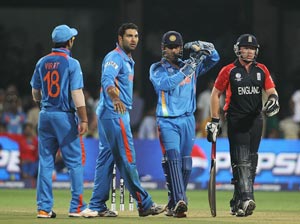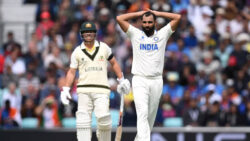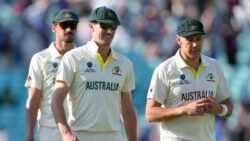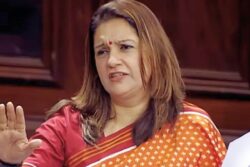ICC Committee again pushes for DRS, BCCI still not in favour

New Delhi: The ICC’s Chief Executives Committee (CEC) has once again attempted to push the Decision Review System towards universal application in international cricket, recommending it to the ICC’s Executive Board following fresh and successful testing of DRS technology. However, the BCCI – which has long opposed DRS – immediately responded by saying its stand remained unchanged, putting the proposal into serious doubt.
 “The BCCI continues to believe that the system is not foolproof,” a release said. “It also sticks to its view that the decision on whether or not to use the DRS for a particular series should be left to the boards involved in that series.”
“The BCCI continues to believe that the system is not foolproof,” a release said. “It also sticks to its view that the decision on whether or not to use the DRS for a particular series should be left to the boards involved in that series.”
The Hot Spot cameras – which had been made mandatory following the 2011 ICC conference in June, only to be taken off the list in October – have now been included as part of the mandatory requirements for the DRS.
The recommendation to the ICC Board comes with one rider: the application will be “subject to the Members’ ability to finance and obtain the required technology.”
The CEC stated it was “satisfied” with the improvements made over the two key components of DRS technology. These include the new Hot Spot cameras as well as the independent ball-tracking research conducted by Dr Ed Rosten, a Cambridge University department of engineering expert in computer-vision technology. Rosten, the ICC said, had “tested the accuracy and reliability of ball-tracking in a recent Test series and concluded that the results were 100% in agreement with the outcomes produced from his assessments.”
Two Hot Spot cameras are now part of the mandatory listing of the DRS requirements along with the ball tracker and a clear audio mike. The number of successful reviews has been retained and involve two per innings for a Test and one per innings for an ODI.
The ICC cricket committee’s suggestion pertaining to the lbw regulation under DRS has also been approved. Under the LBW rule, the ‘margin of uncertainty’ regarding the point of impact with the batsman will be the same as that provided for the point of impact with the stumps.
The CEC has also endorsed recommendations regarding the Powerplays and passed them on to the executive board for its approval. These involve bowling Powerplays to be restricted to the first 10 overs and a batting Powerplay of five overs chosen and completed before the start of the 41st over. Similarly, a maximum of four fielders are to be allowed outside the 30-yard circle in the non-Powerplay overs and the number of permitted short-pitched balls should increase from one per over to two.
The CEC supported the promotion of day-night Test cricket, “with the approval of both participating teams” and with the usage of a “suitable ball” as recommended by the cricket committee. The CEC stated that both Test and ODI cricket should work for “extra context” through the promotion of the ICC’s World Test Championship, which is currently struggling to find support in the broadcast industry, and a full qualification process for the 2015 ICC Cricket World Cup, which must tackle opposition to lower-ranked Full Member nations looking for automatic entry into a 10-team World Cup.
The ICC CEC is made up of chief executives of the 10 Full Member nations, and three associate member representatives. The CEC meetings are chaired by the ICC Chief Executive and can include the ICC president and the chairman of the ICC cricket committee, in this case Clive Lloyd.
The ICC’s Executive Board, which will study these recommendations, comprises the chairman or president of each of the 10 Full Member nations, plus three elected Associate Member representatives, the ICC President who chairs proceedings, the ICC Vice-President, the chief executive and then by invitation, the ICC principal advisor.








